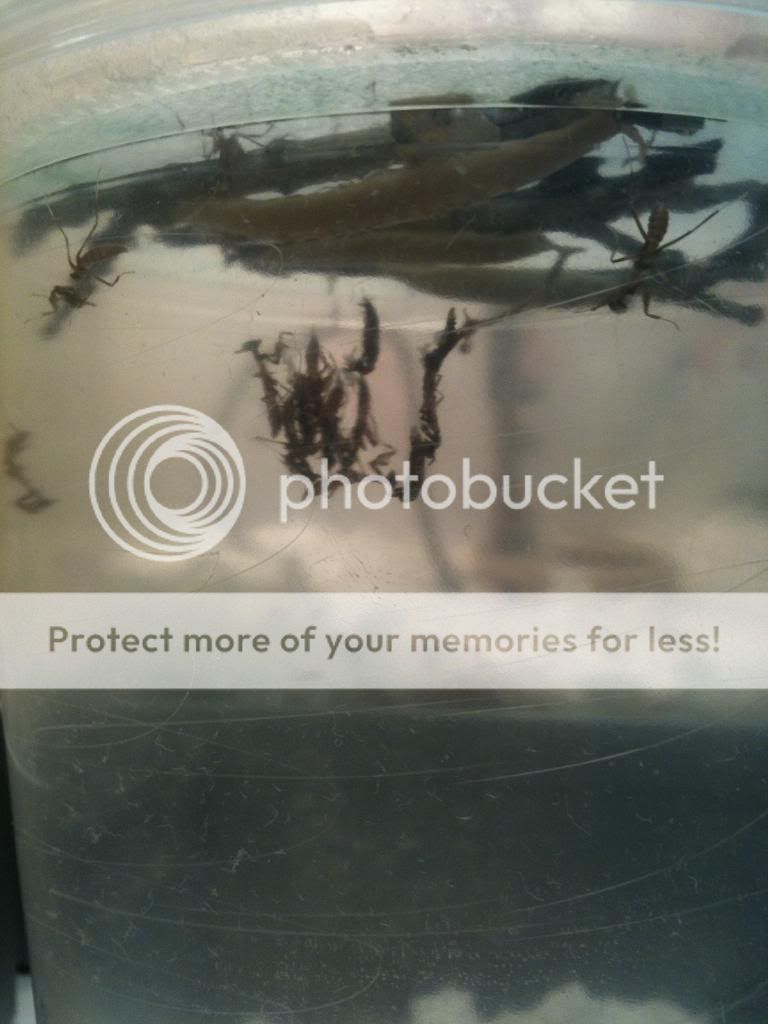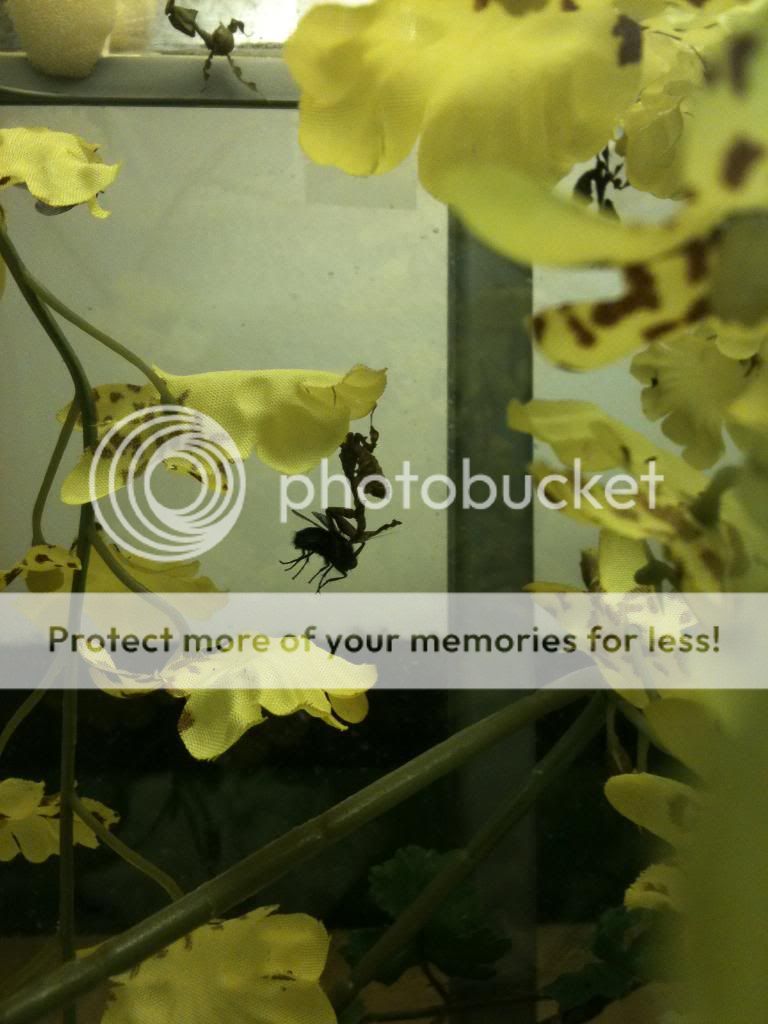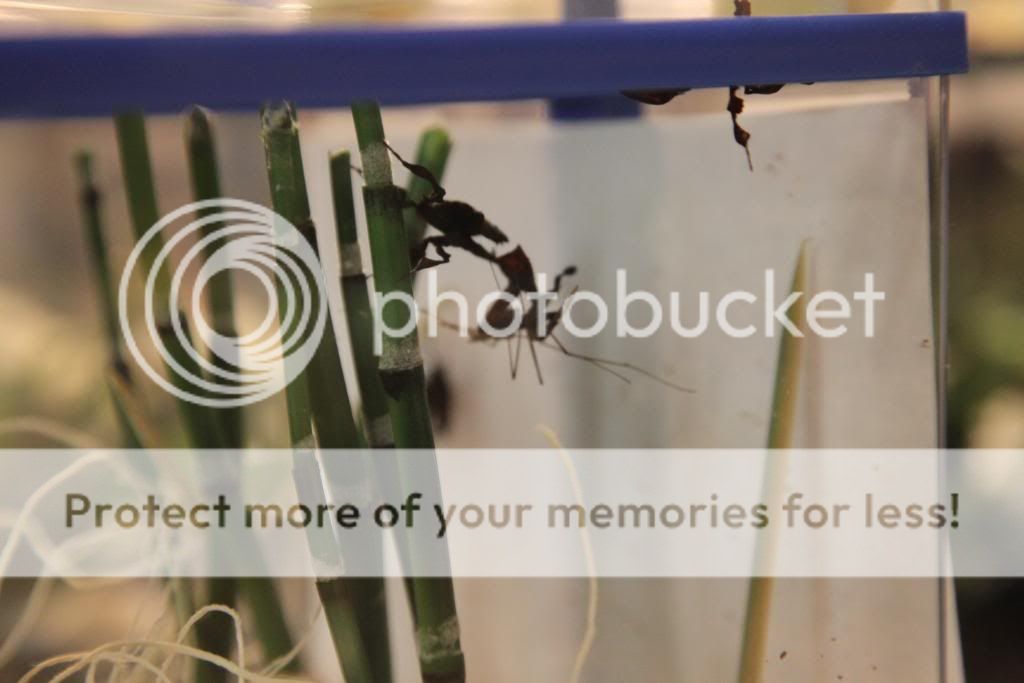brancsikia339
Well-known member
Hey everyone,
I'm going to post a care sheet about ghost mantids. Please add to it if you have anymore info, pictures, stories, and your own personal experiences with this awesome mantis.
Appearance:
Cryptic, resembling leaf or leaf matter. Comes in a variety of colors: Green, Jade, Brown, Golden brown, Burnt umber, Dark brown, and Black. It is thought that the lower the temperature and higher the humidity makes them greener, and vice versa if you want browner. Nymphs often have alien looking heads and a normal mantis body, but after about L3, ghost mantids will begin to look like foliage.
Living conditions:
Ghosts are not as picky as other species, and can be kept at a moderate temperature at about 70-80 degrees. Cooler temperatures will lengthen the lifespan. They need a large cage, generally the smallest would by 3x the height and length of the mantis. The cage would need lots of foliage and leaves for the mantis to perch on.
Feeding:
Ghosts prefer flying insects to crickets or roaches. Nymphs will eat fruitflies to the occasional housefly, and adults will eat moths, small butterflies, BB's, etc. Ghost mantids won't need to eat as much after they get to about L5. Occasional spritzing is necessary for proper molting.
I'm going to post a care sheet about ghost mantids. Please add to it if you have anymore info, pictures, stories, and your own personal experiences with this awesome mantis.
Appearance:
Cryptic, resembling leaf or leaf matter. Comes in a variety of colors: Green, Jade, Brown, Golden brown, Burnt umber, Dark brown, and Black. It is thought that the lower the temperature and higher the humidity makes them greener, and vice versa if you want browner. Nymphs often have alien looking heads and a normal mantis body, but after about L3, ghost mantids will begin to look like foliage.
Living conditions:
Ghosts are not as picky as other species, and can be kept at a moderate temperature at about 70-80 degrees. Cooler temperatures will lengthen the lifespan. They need a large cage, generally the smallest would by 3x the height and length of the mantis. The cage would need lots of foliage and leaves for the mantis to perch on.
Feeding:
Ghosts prefer flying insects to crickets or roaches. Nymphs will eat fruitflies to the occasional housefly, and adults will eat moths, small butterflies, BB's, etc. Ghost mantids won't need to eat as much after they get to about L5. Occasional spritzing is necessary for proper molting.
Last edited by a moderator:















































